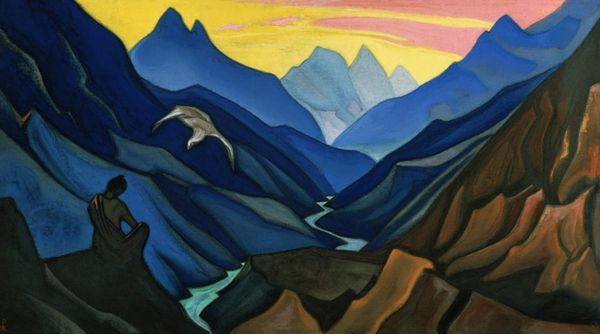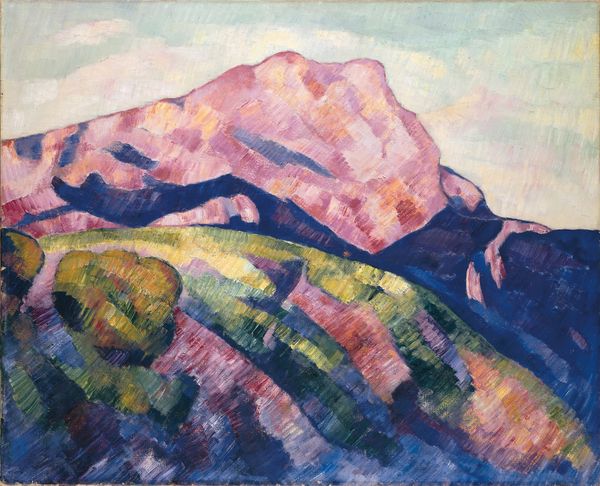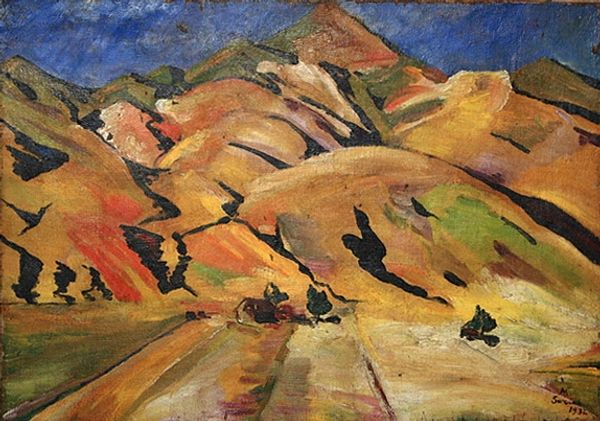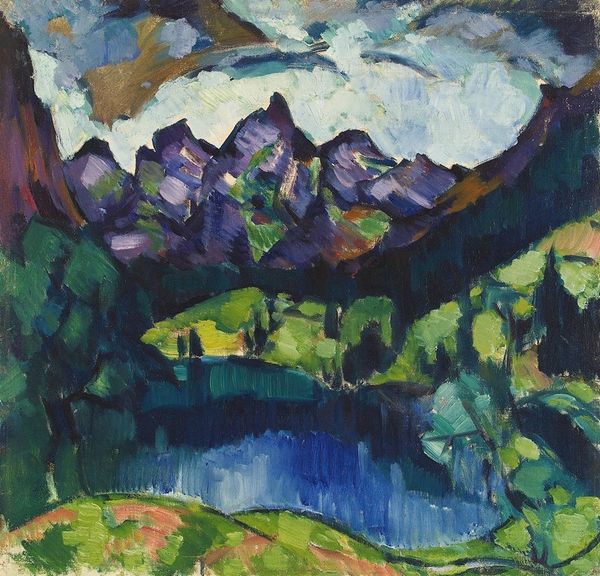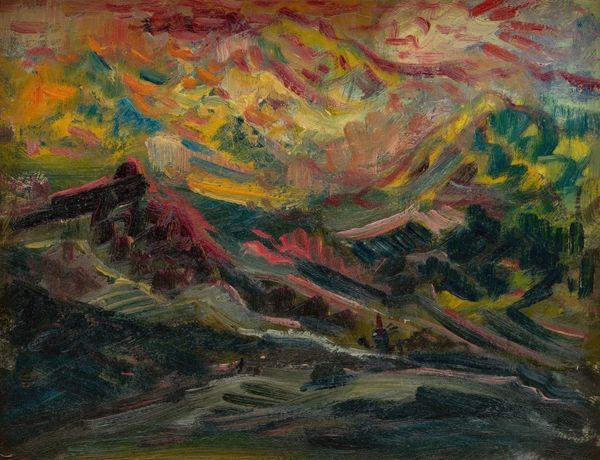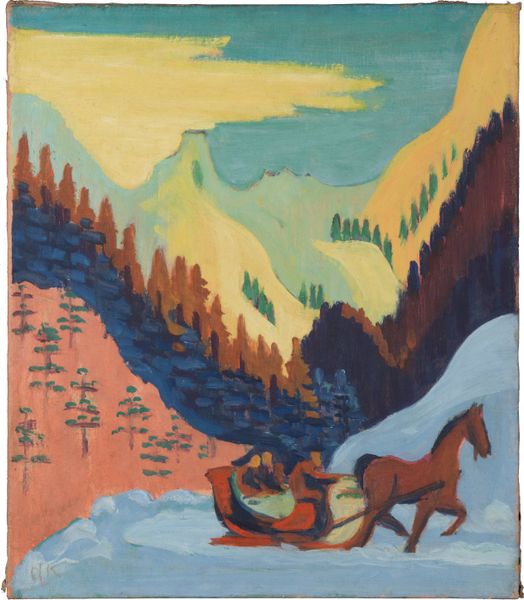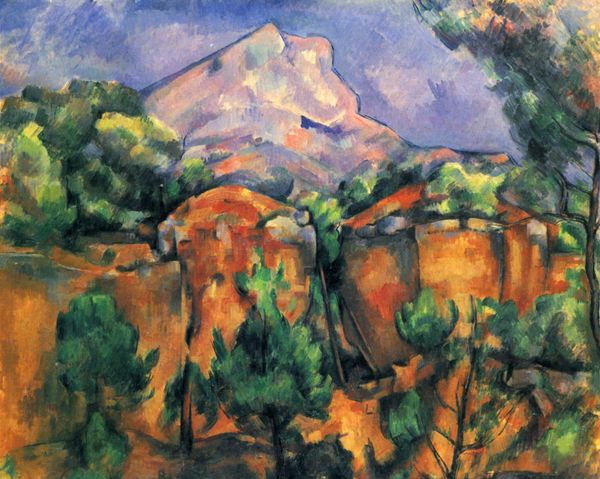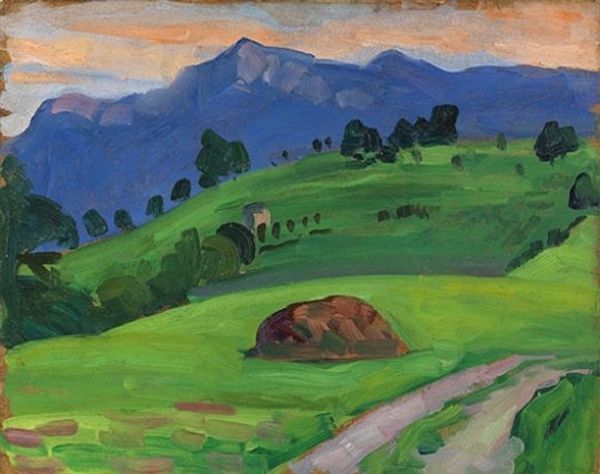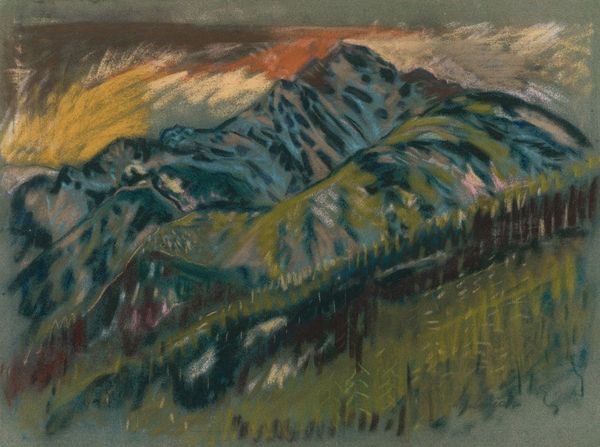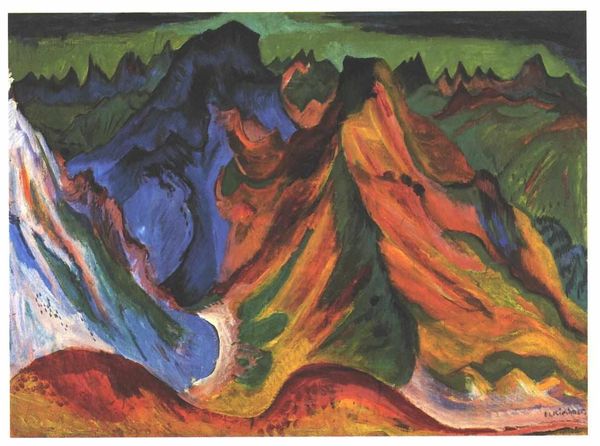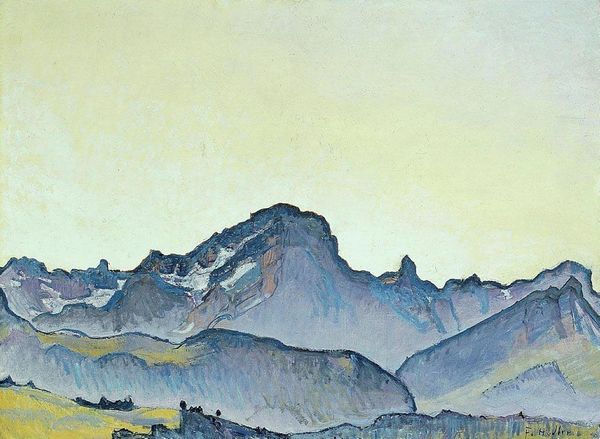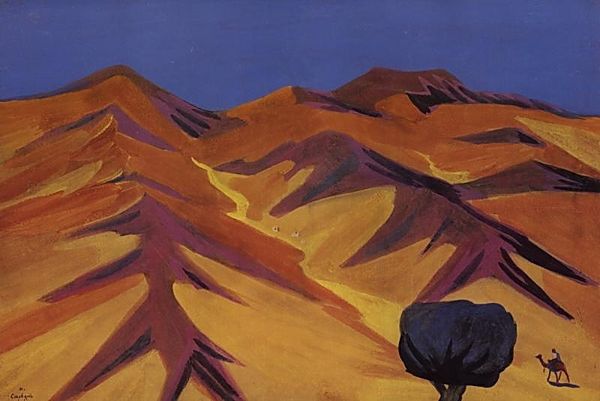
Copyright: Public domain US
Curator: Martiros Sarian’s "Morning in Stavrin," created in 1912, is a captivating landscape painting rendered in oil on canvas. Editor: It's immediately striking. The color palette feels almost deliberately discordant, yet there's a definite harmony in the composition. The bold, unmodulated colors give it a primitive feel, reminiscent of early Expressionism. Curator: The work showcases Sarian's involvement with Fauvism. Note how the intense colors do not mimic reality but serve expressive and compositional purposes. Consider the social and artistic context in which Sarian was operating. Fauvism, with its emphasis on bold colors, was pushing boundaries and challenging established academic painting norms. Sarian, by adopting this style, positioned himself within this avant-garde movement. Editor: Focusing on pure form, notice how Sarian uses diagonal lines to create depth, almost guiding your eyes through the valley towards the mountains in the background. There’s a rhythmic structure that the colors enhance, and these goats give it the appropriate scale to be visually engaging, they become compositional instruments for depth perception. Curator: It’s relevant to explore Sarian’s background. Born in Nakhichevan, his Armenian heritage likely shaped his perspective and influenced the imagery he chose to depict. He paints a stylized world, referencing his specific locality while drawing inspiration from contemporary art circles in Europe. It's a blend of personal experience and international movements. Editor: I'd argue that his cultural heritage, though undeniably influential, perhaps matters less than the pure visual experience presented by this piece. He bends the conventional uses of form, light, and colour to express this location in this precise moment of time. Notice the sharp delineations where he combines dark outlines with blocks of saturated pigment; this combination feels intentionally designed to invoke the emotional reality, rather than mimetic accuracy. Curator: Precisely, it allows a modern lens to re-interpret landscape and nature! The artwork prompts us to contemplate the intertwined aspects of location, identity, artistic production, and their consumption. Editor: Agreed! In the end, "Morning in Stavrin" is far more than just a landscape painting; its Fauvist techniques invite each observer to examine light, form, and color and reconsider traditional composition.
Comments
No comments
Be the first to comment and join the conversation on the ultimate creative platform.
